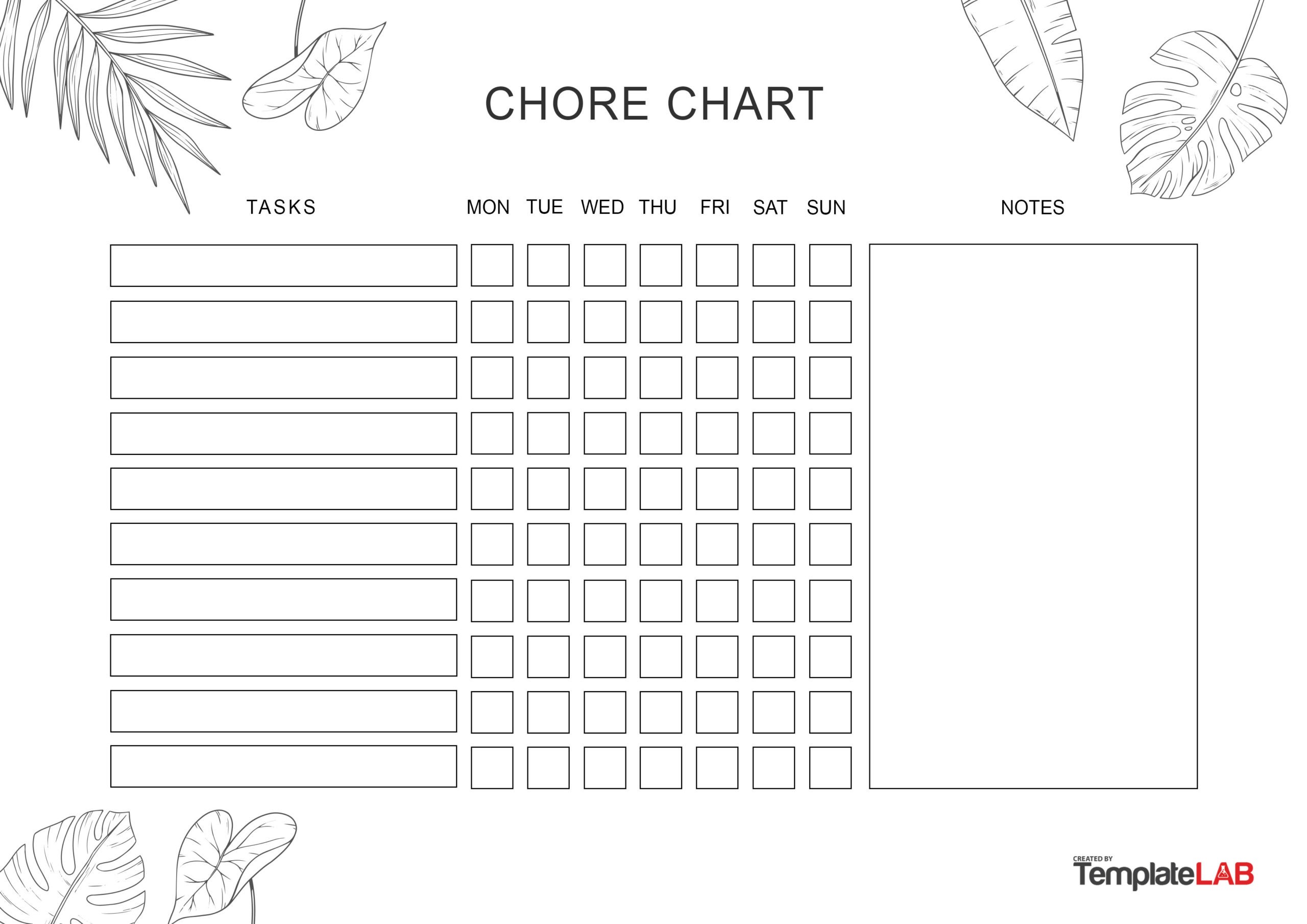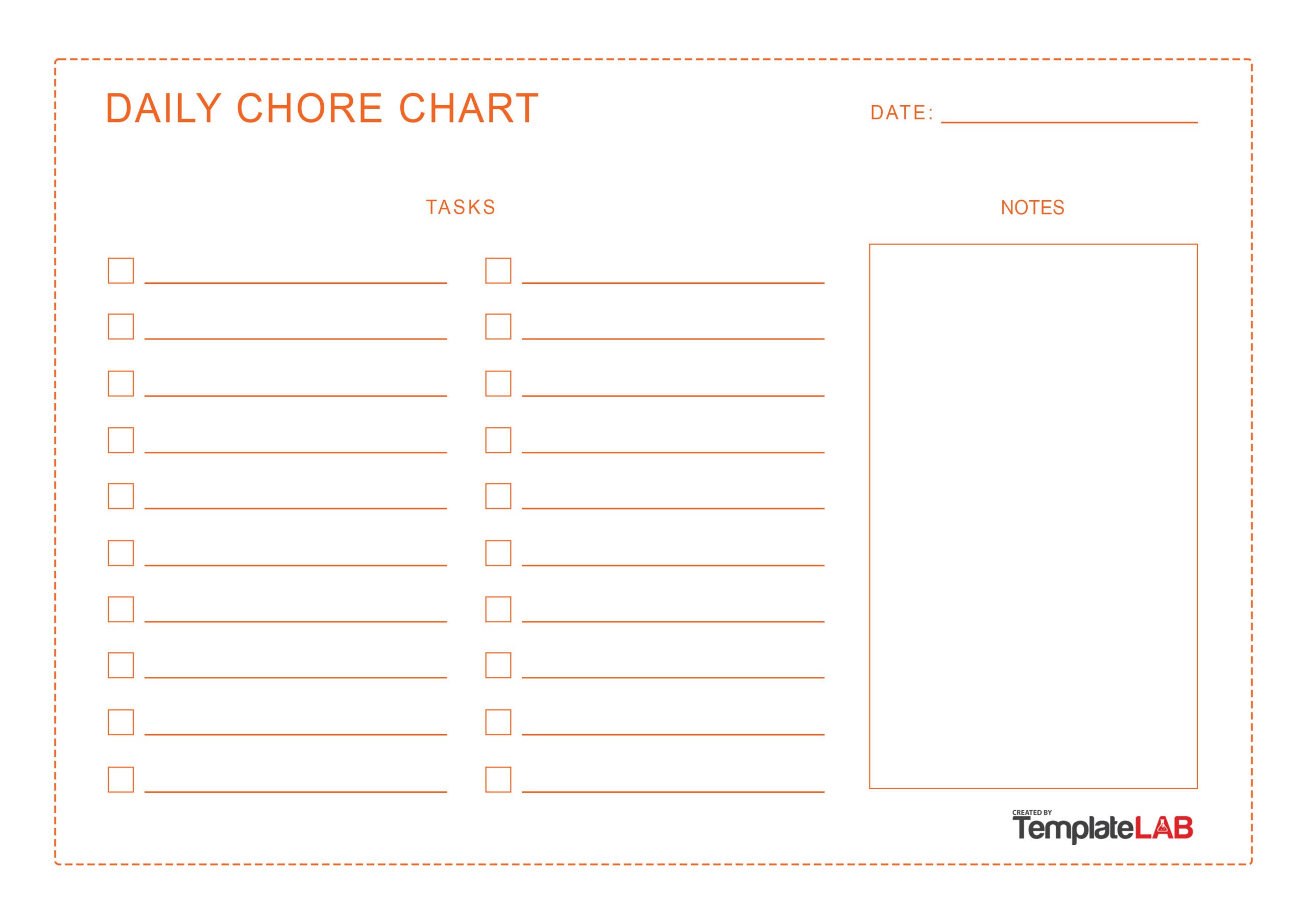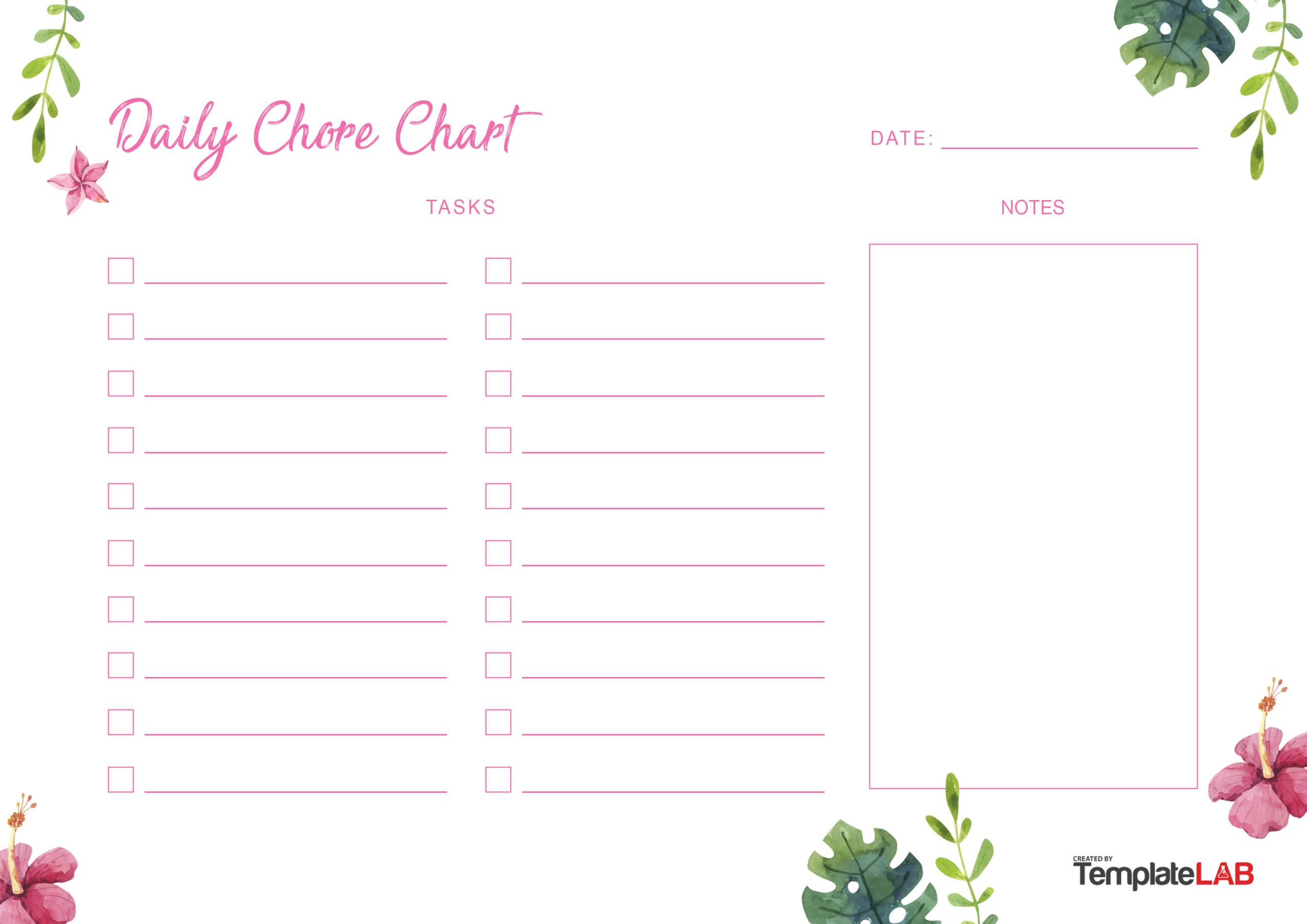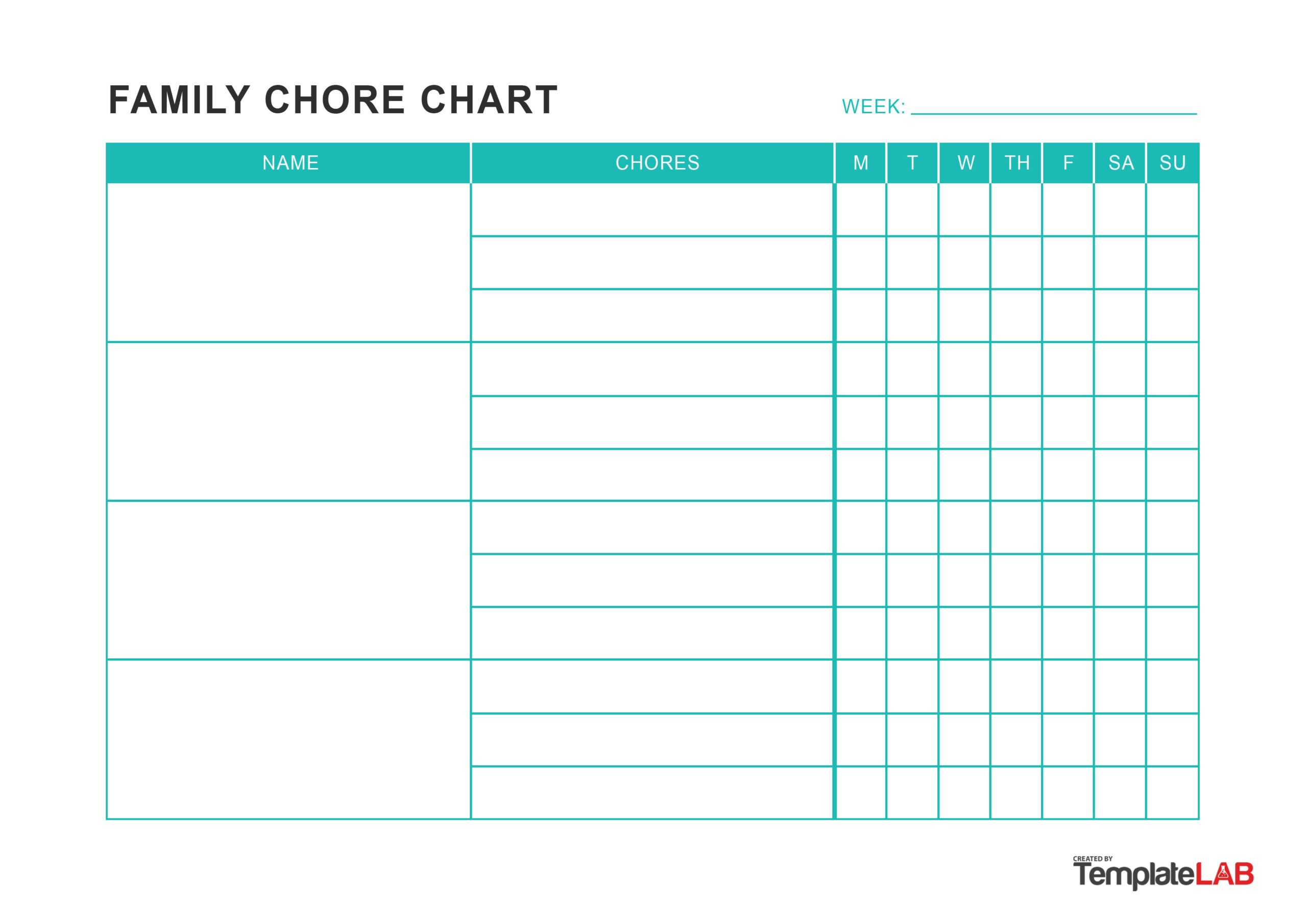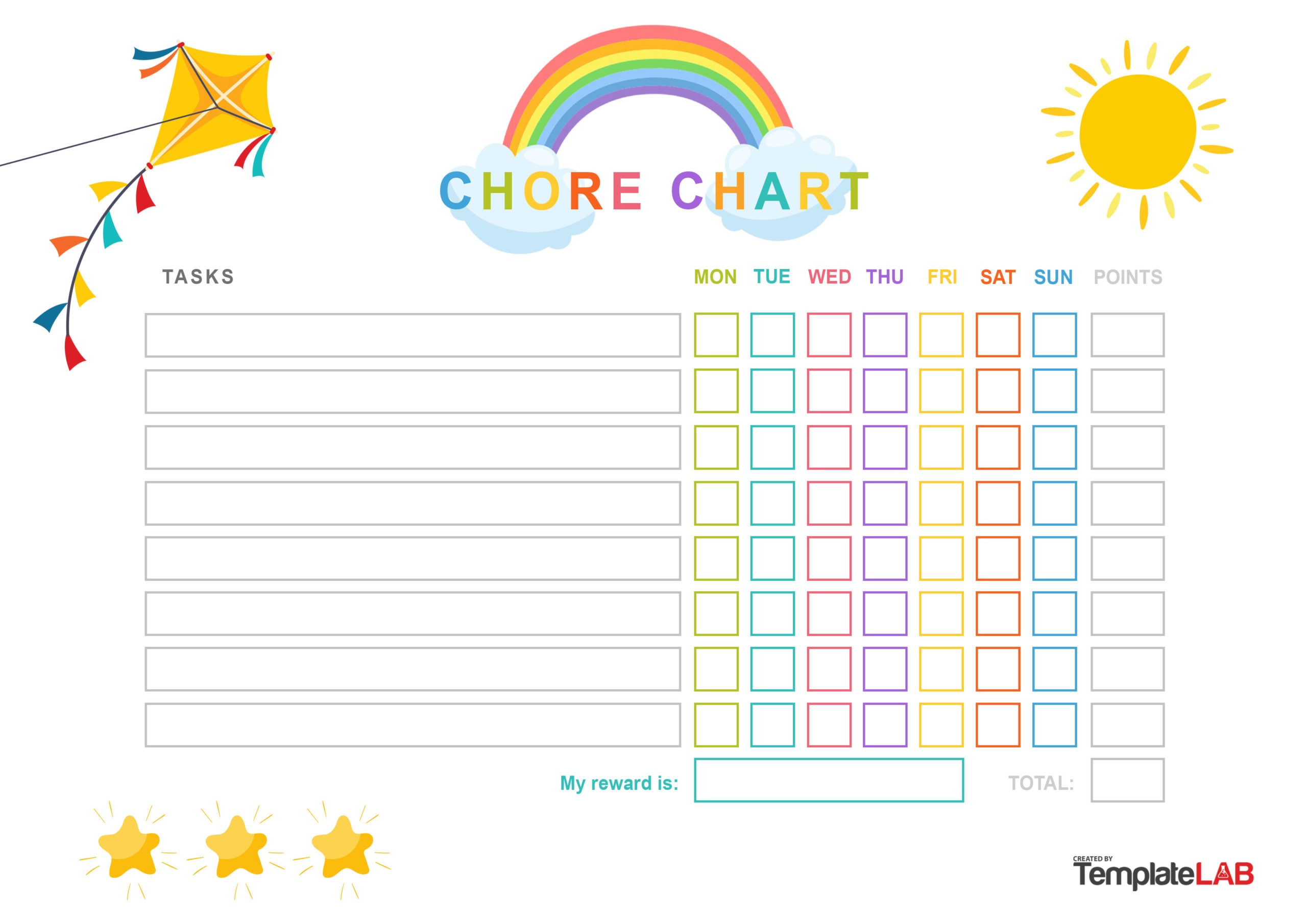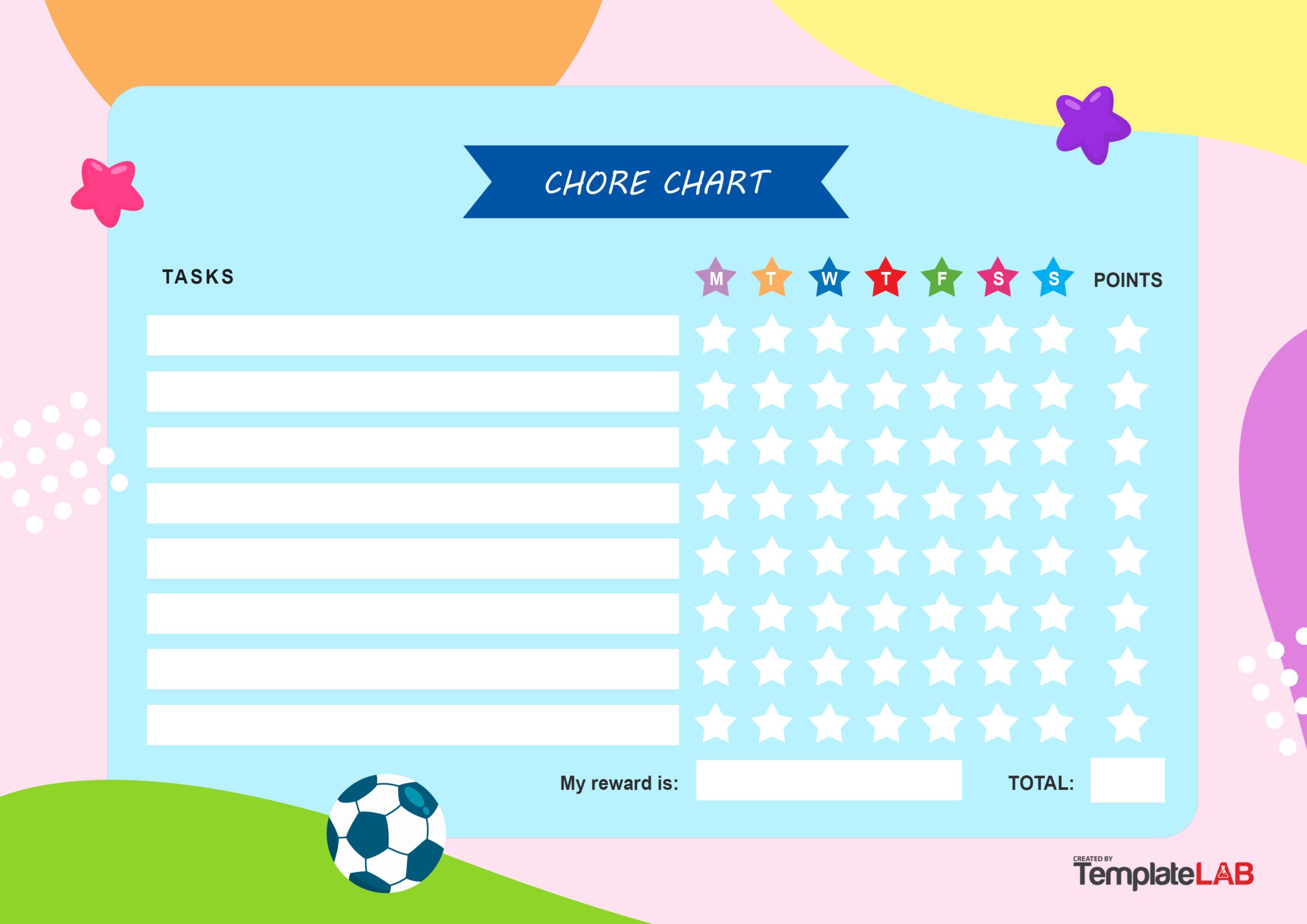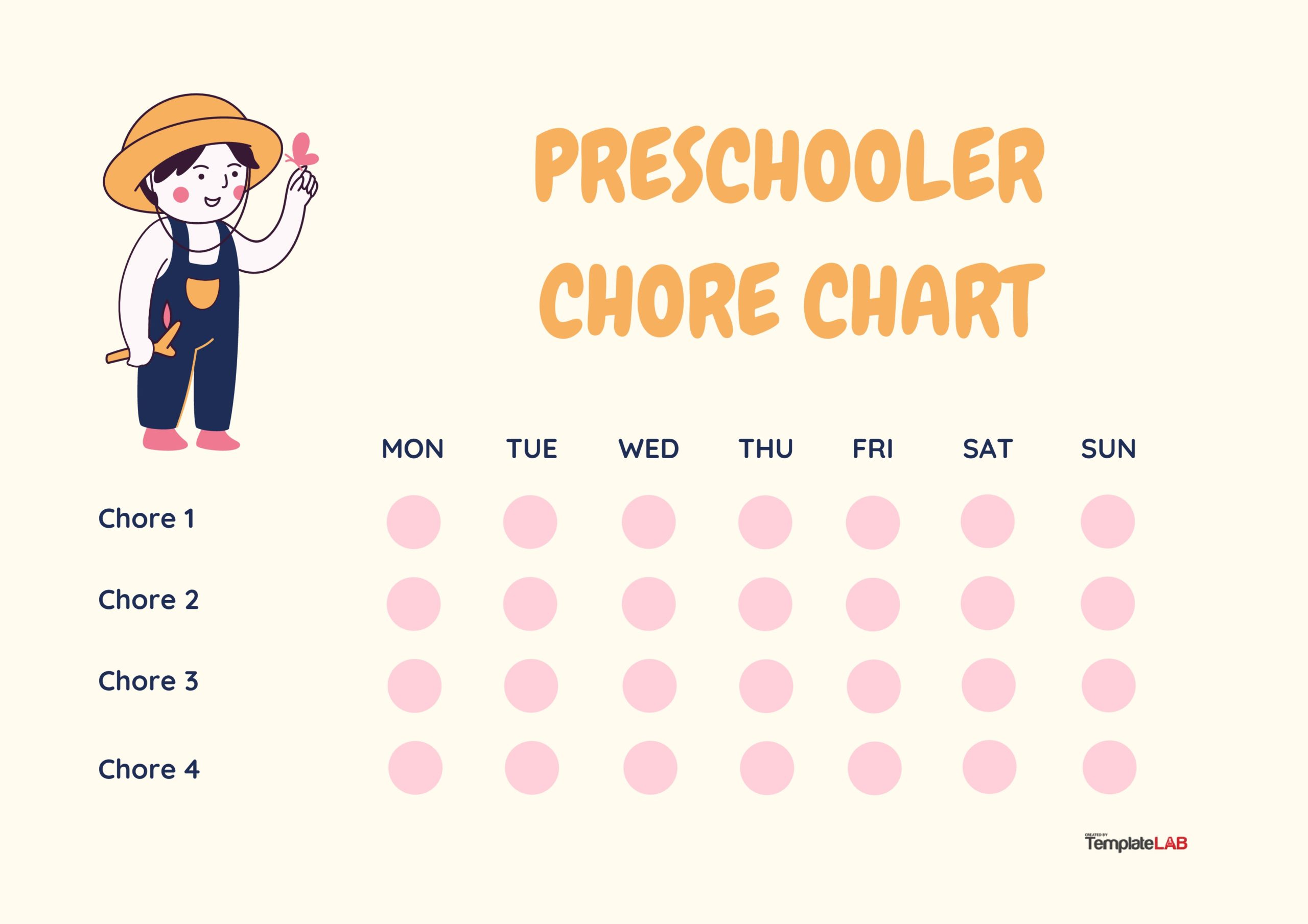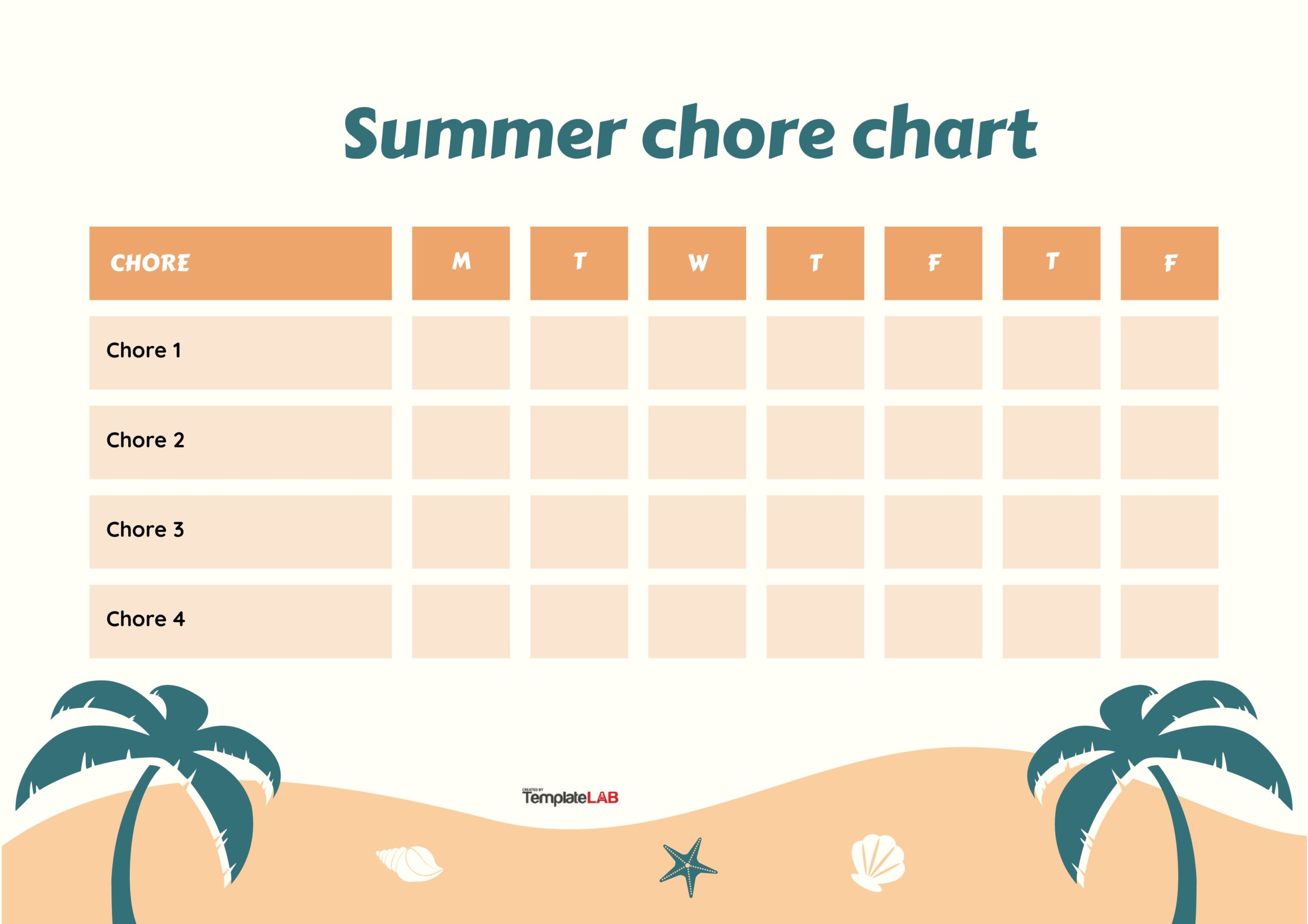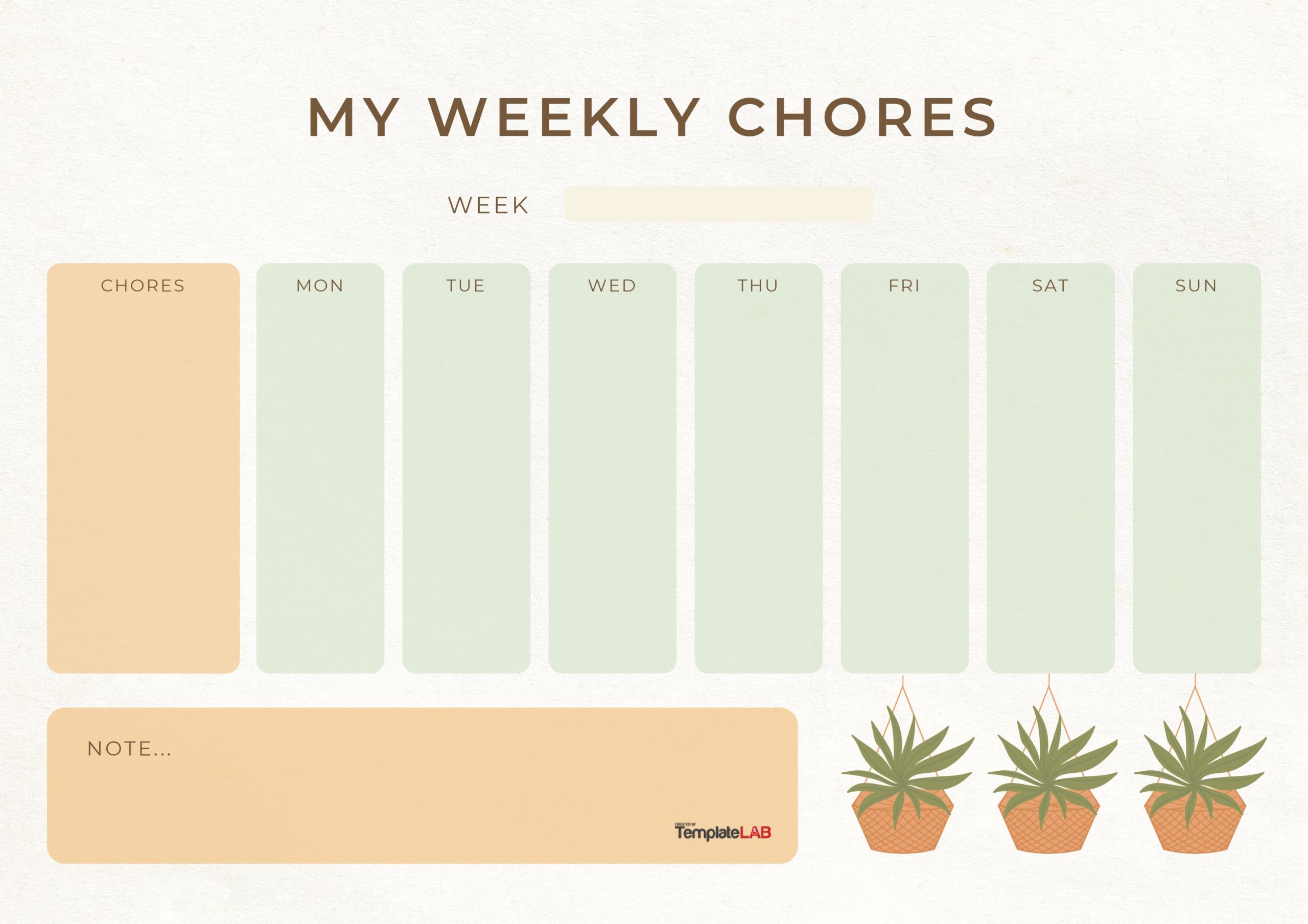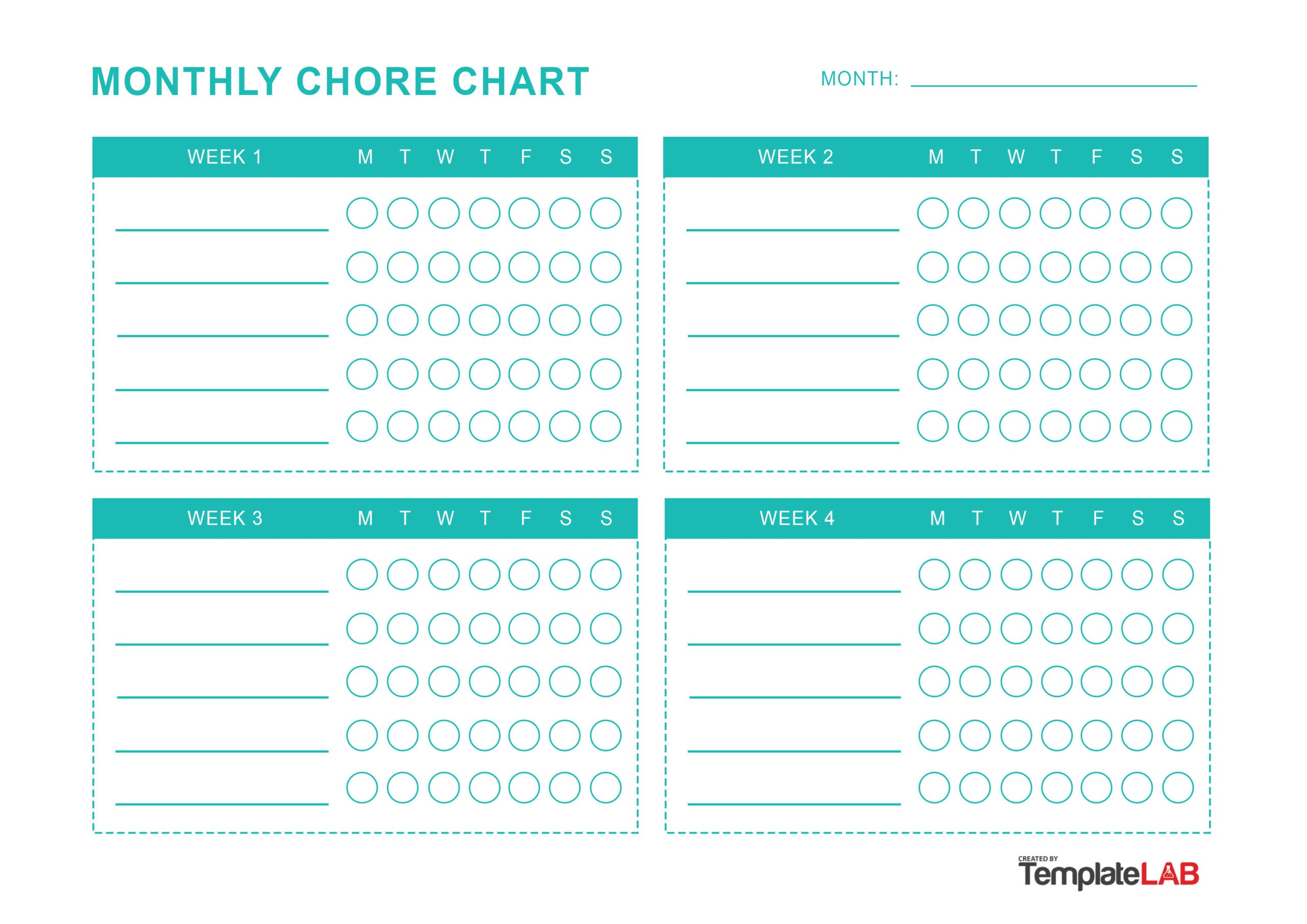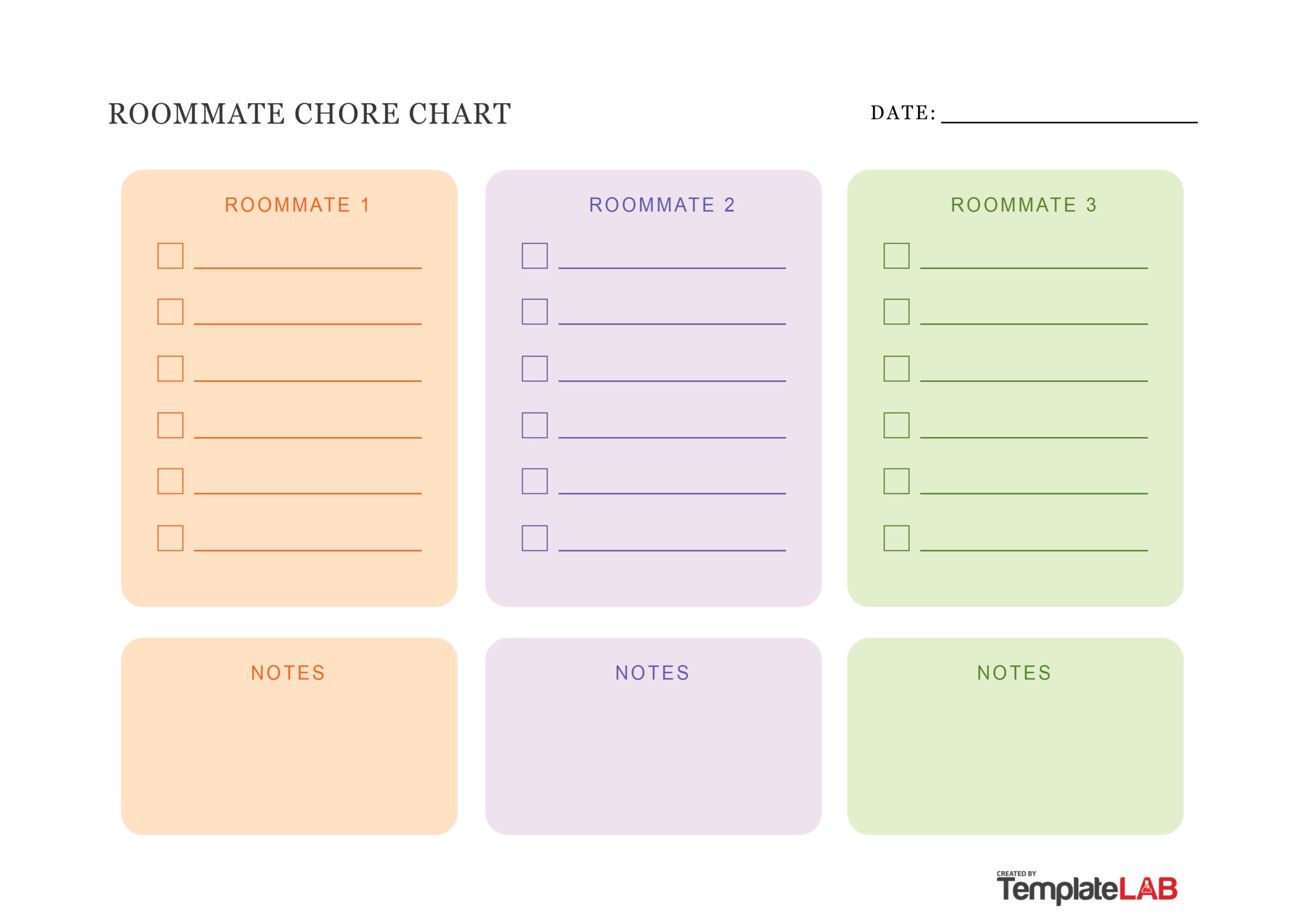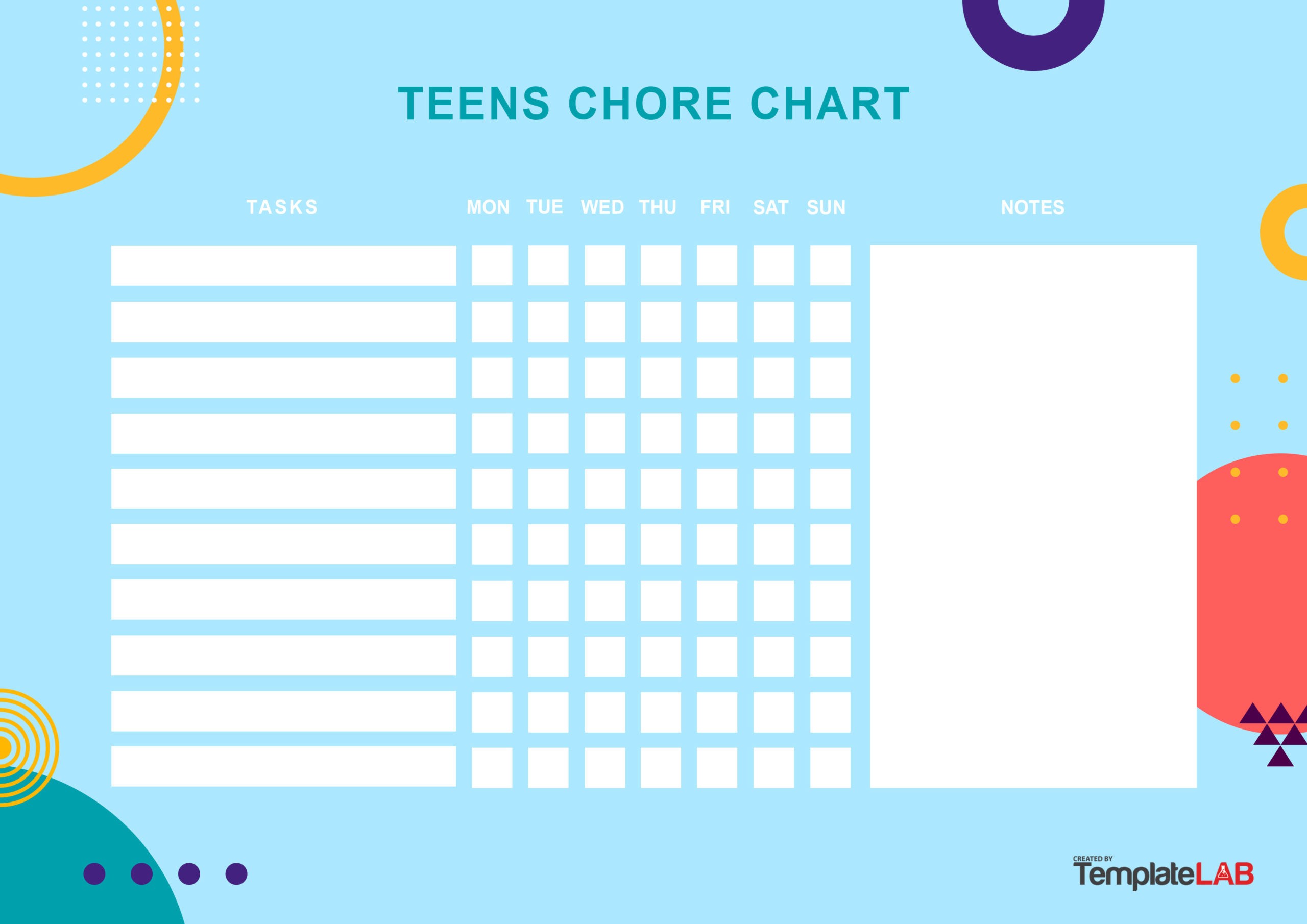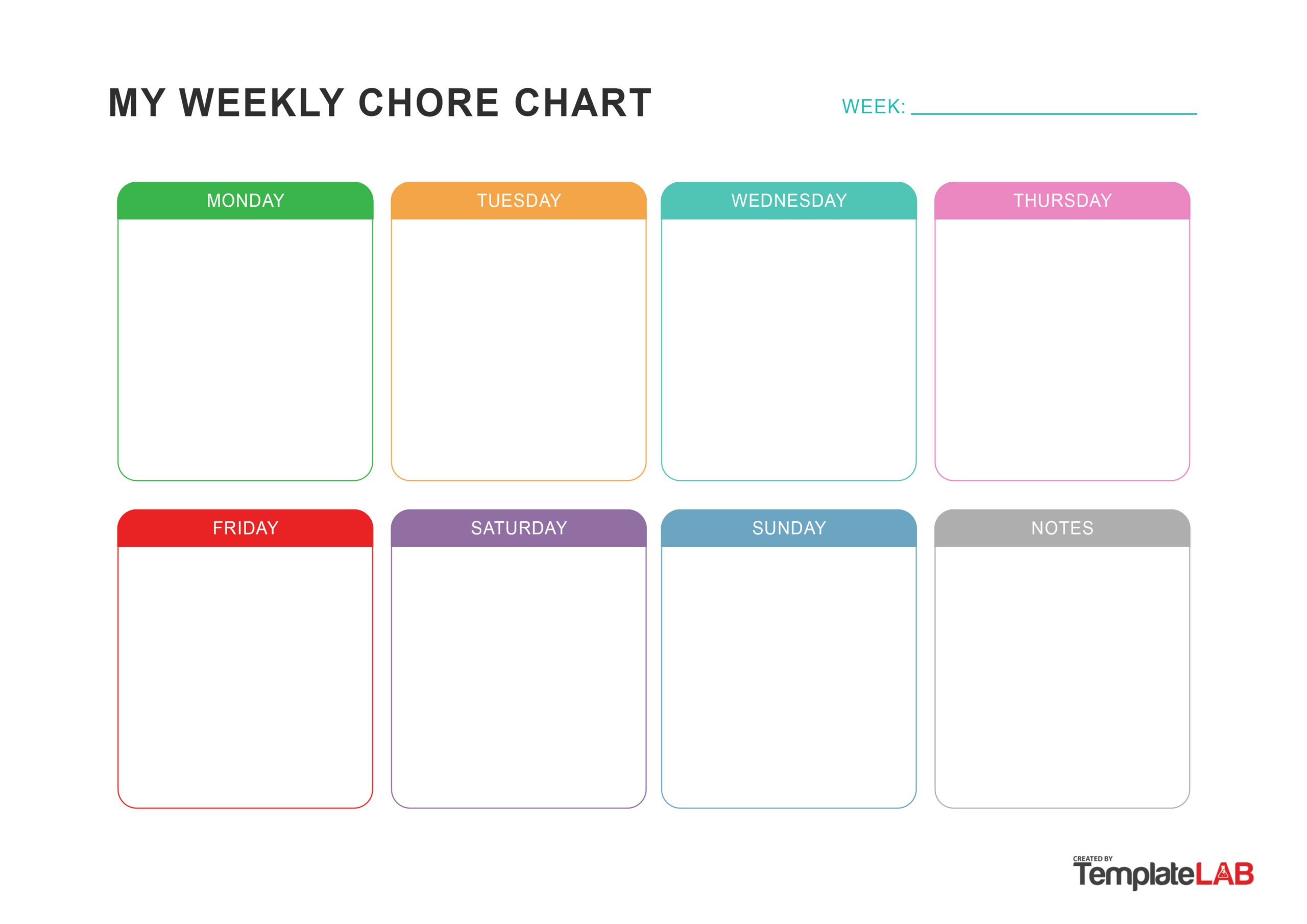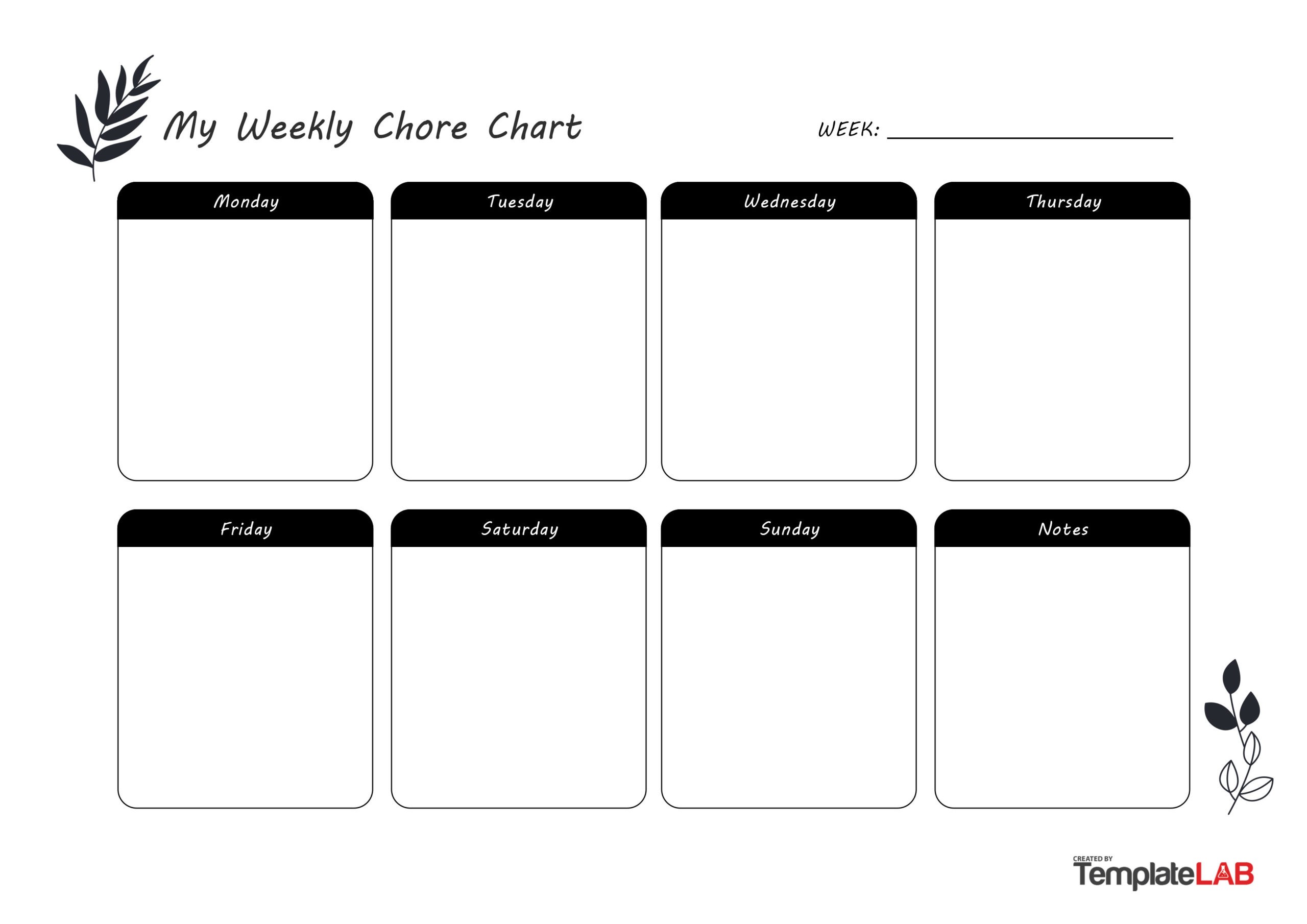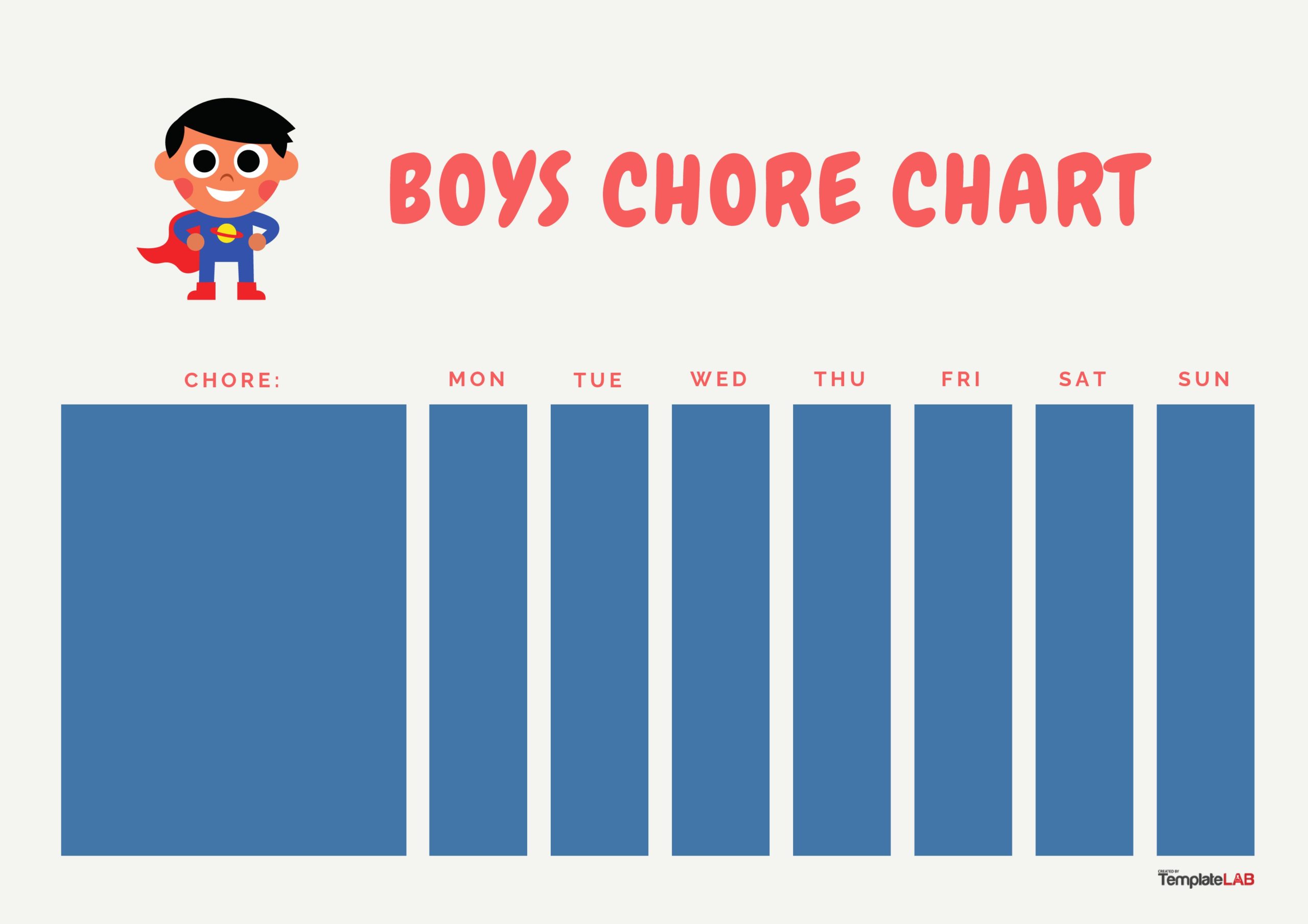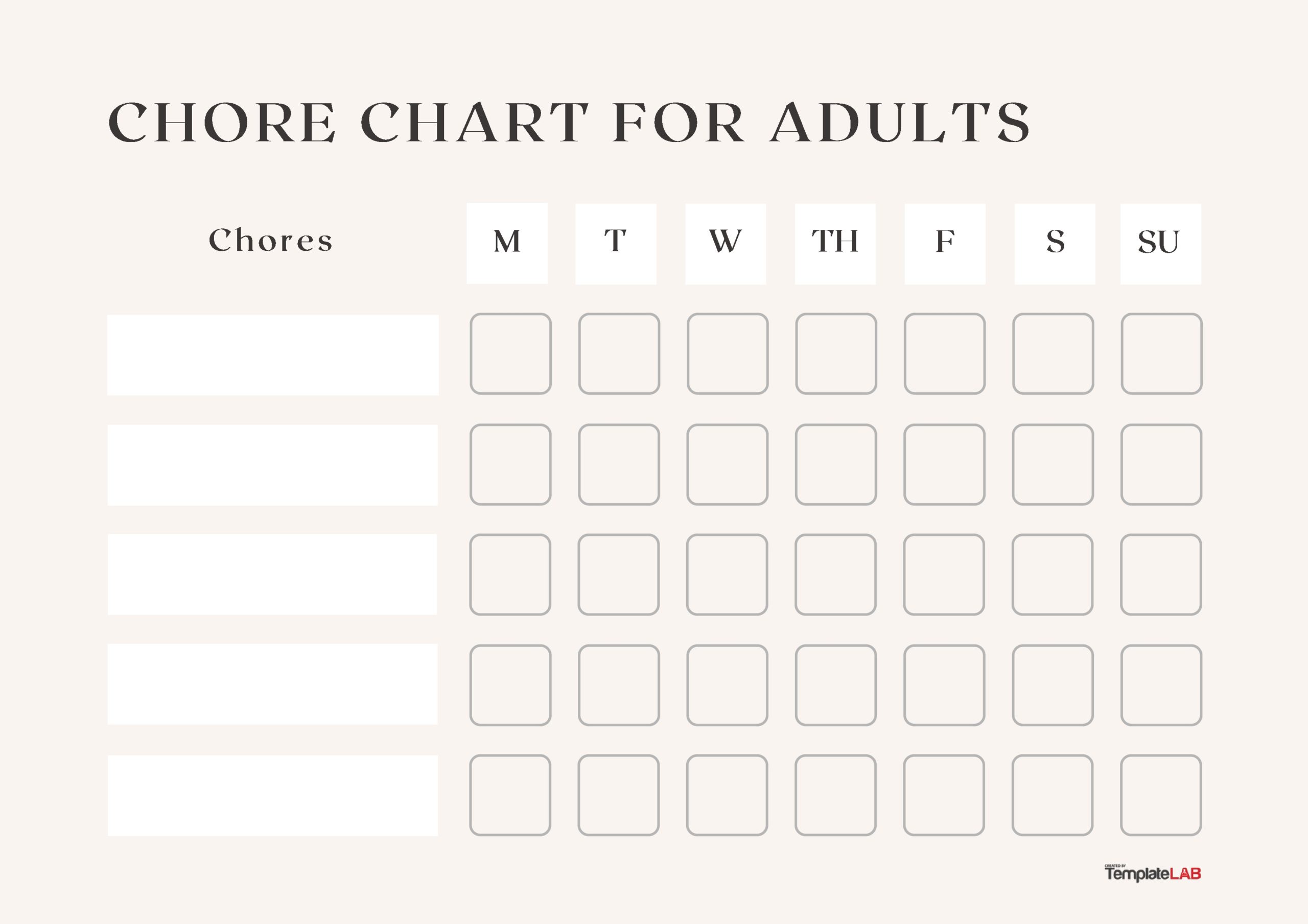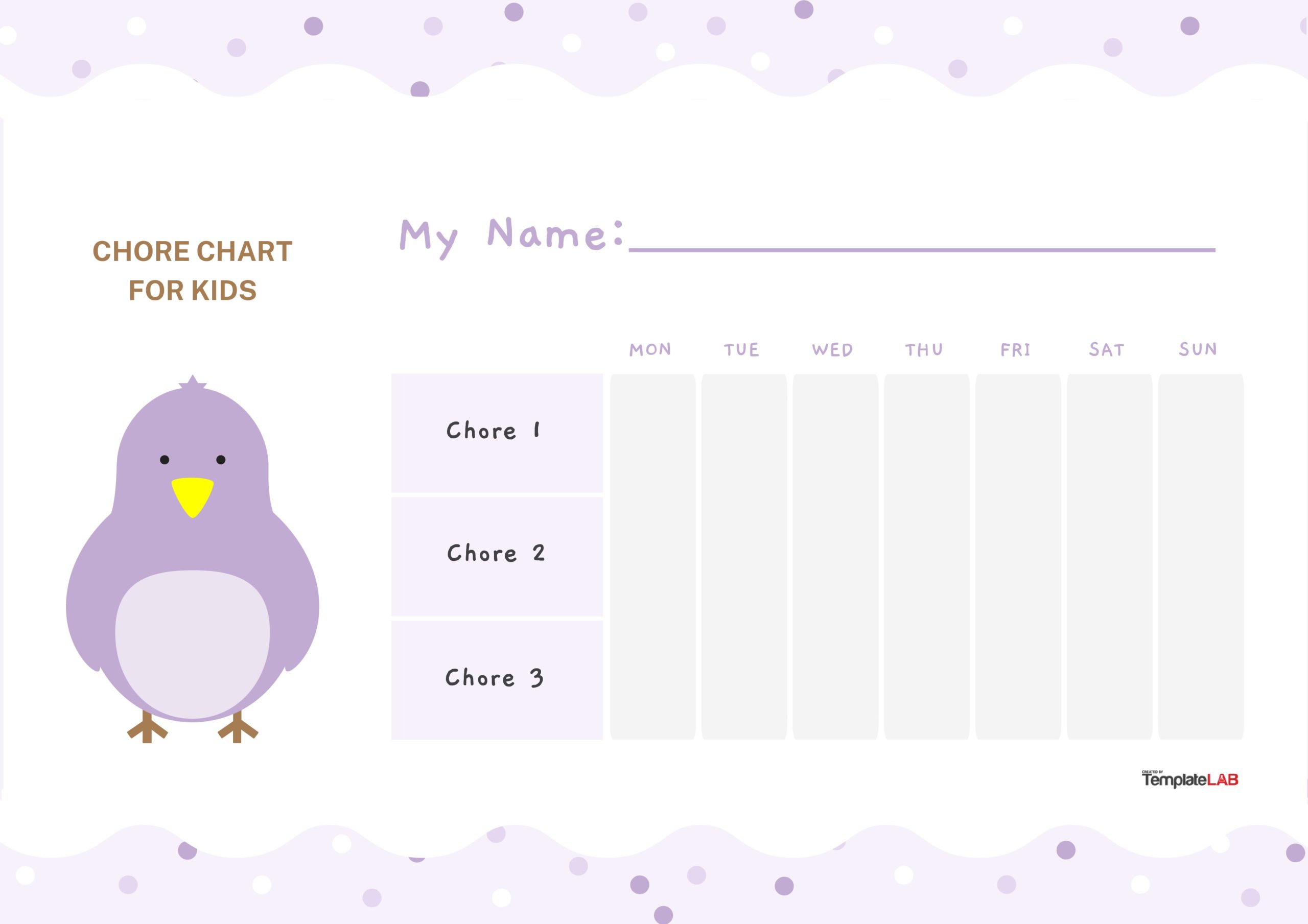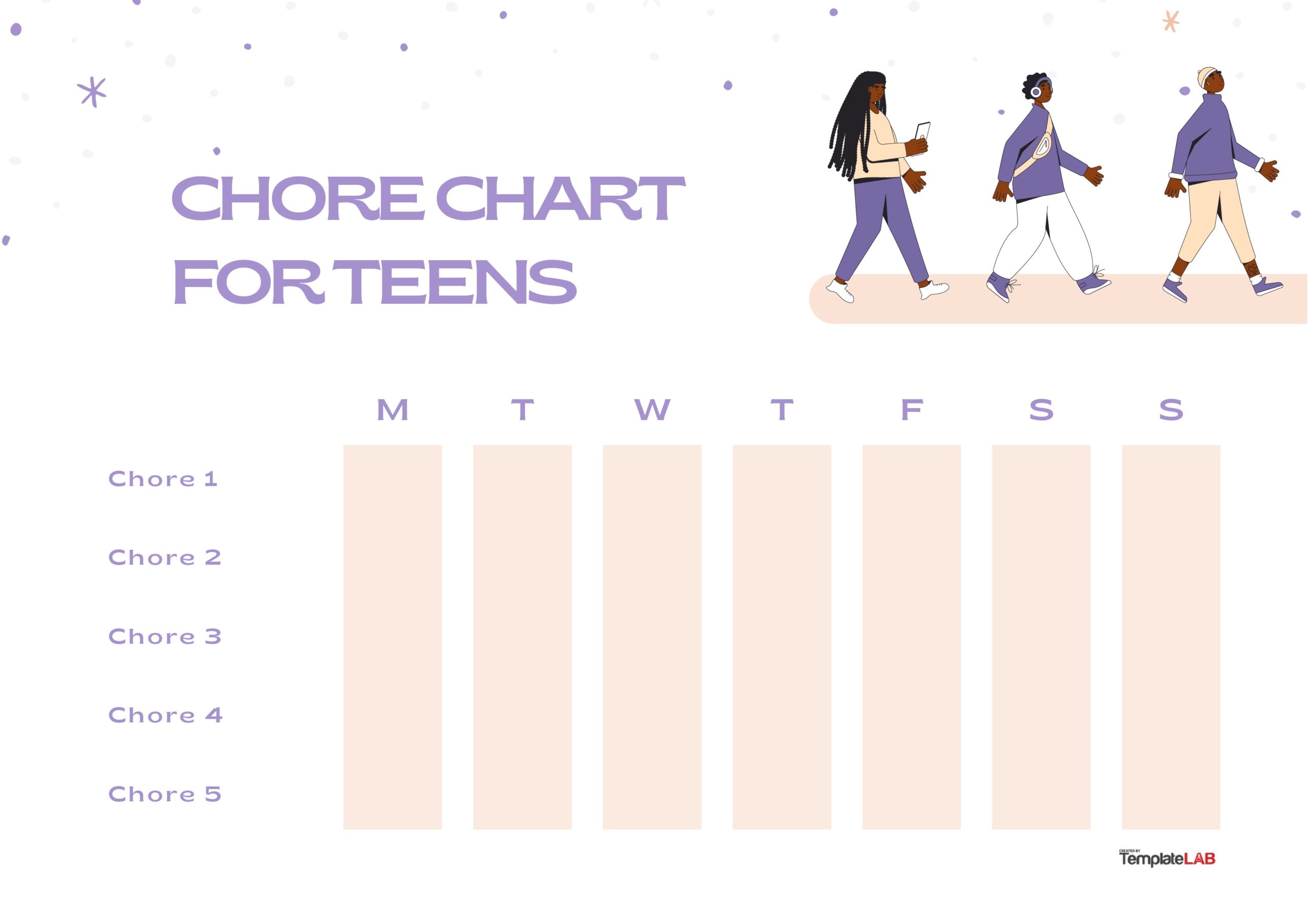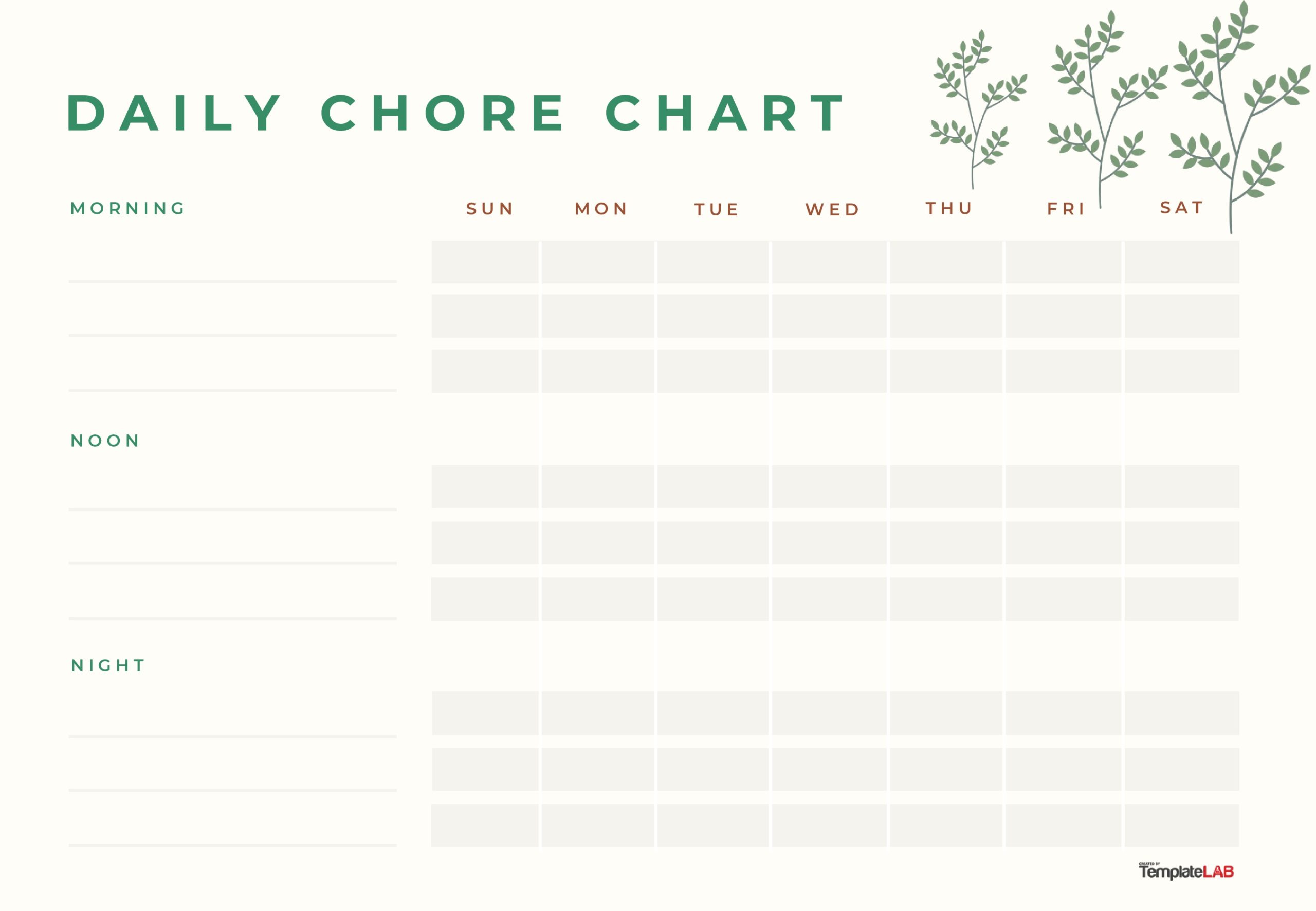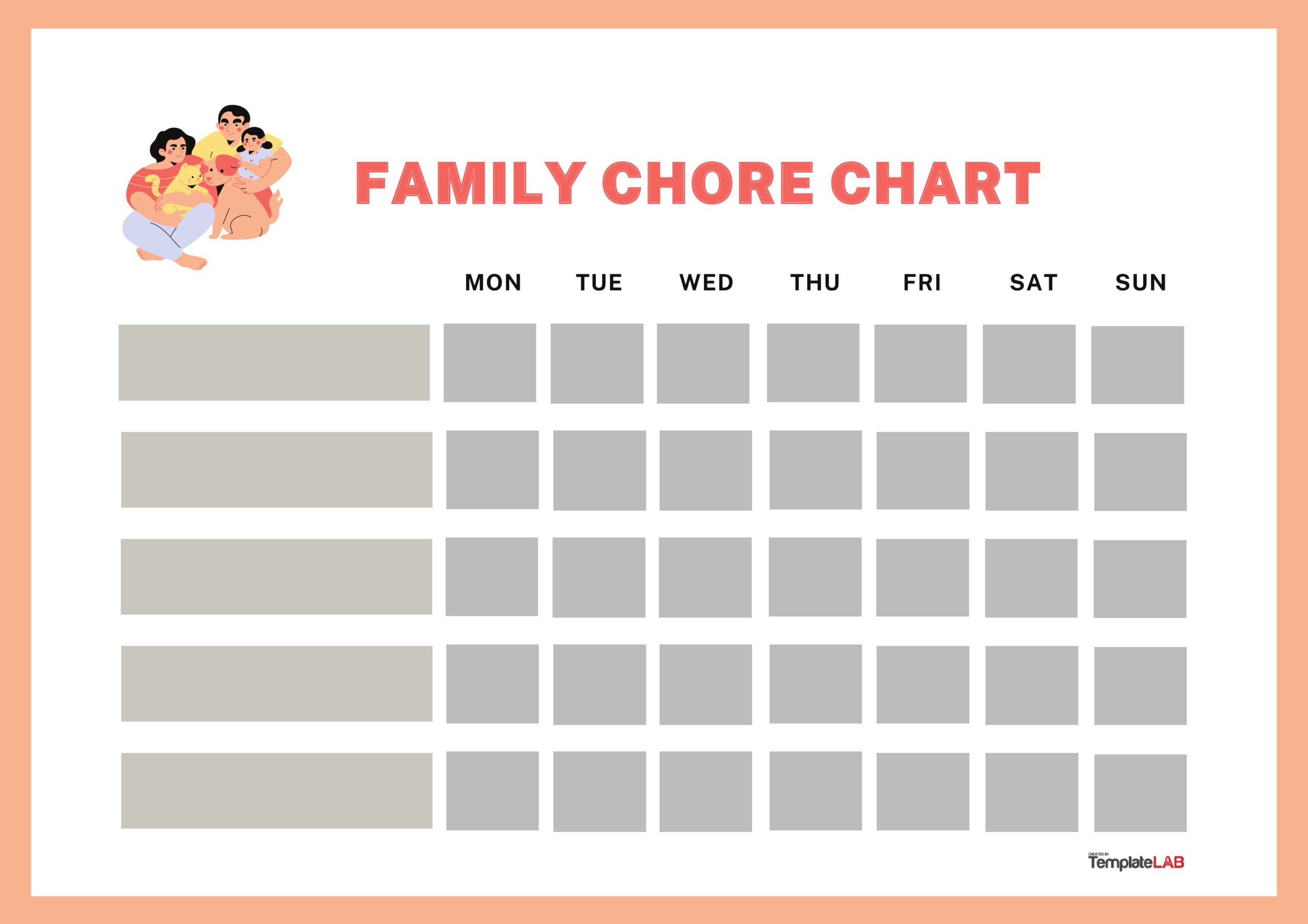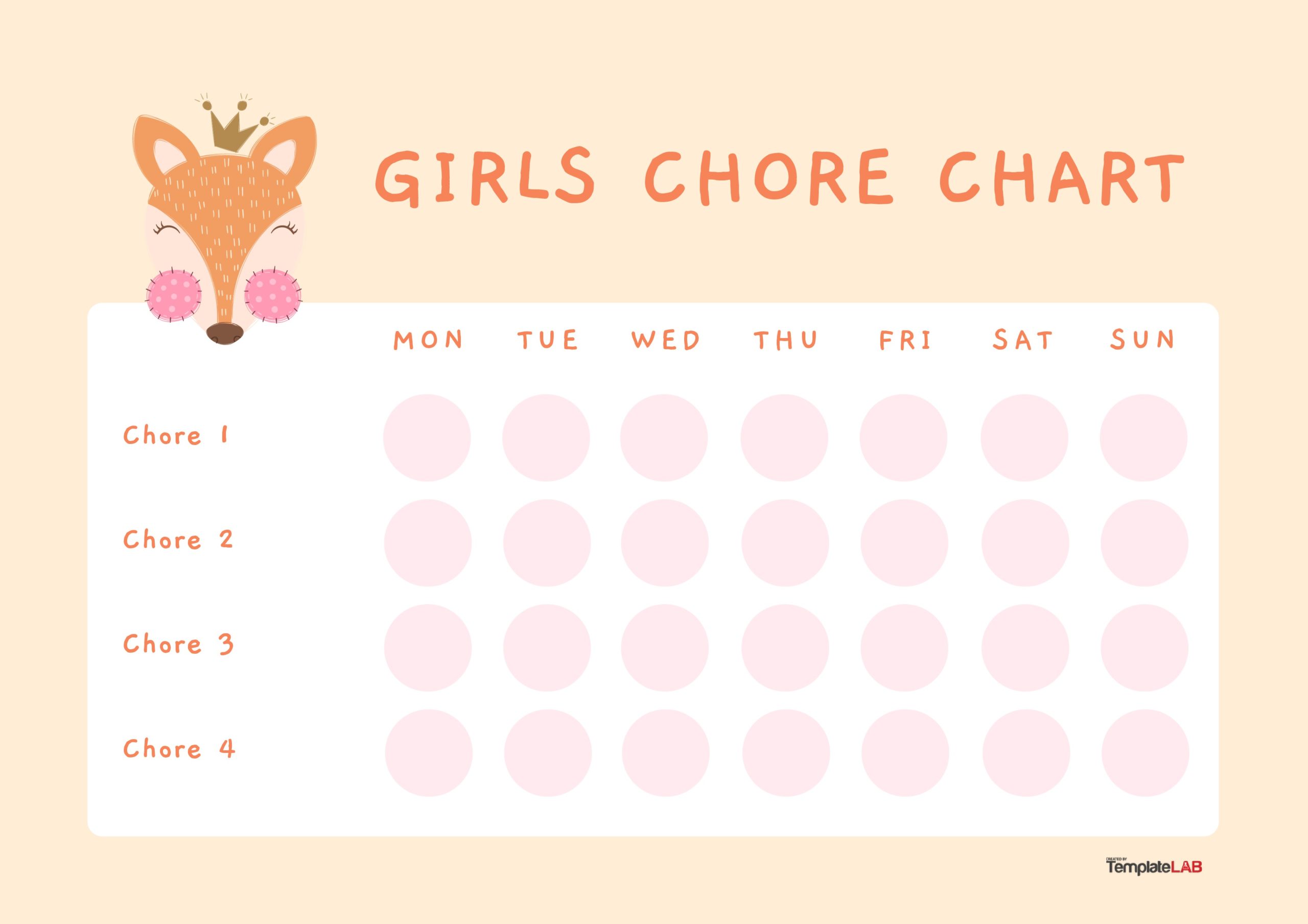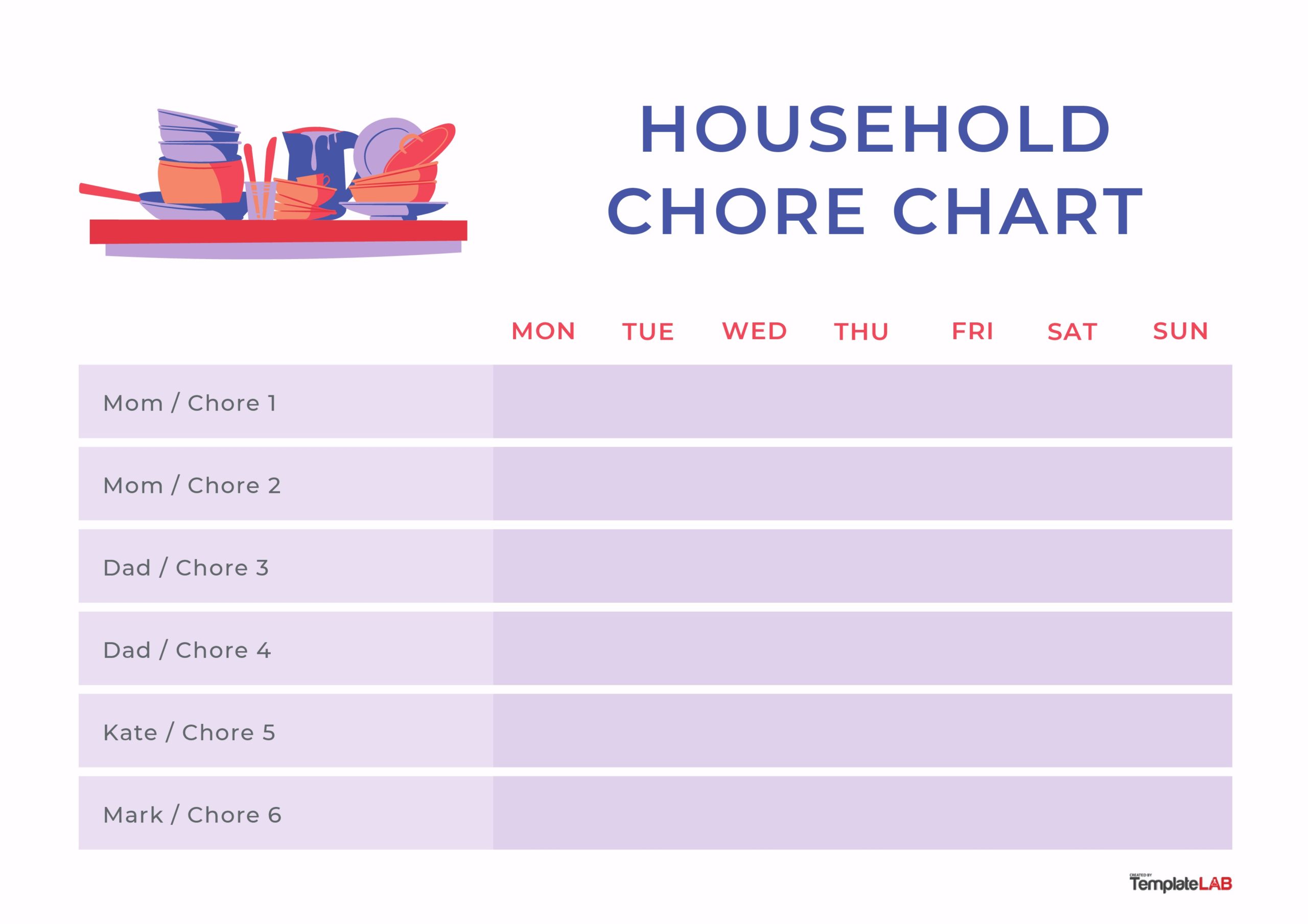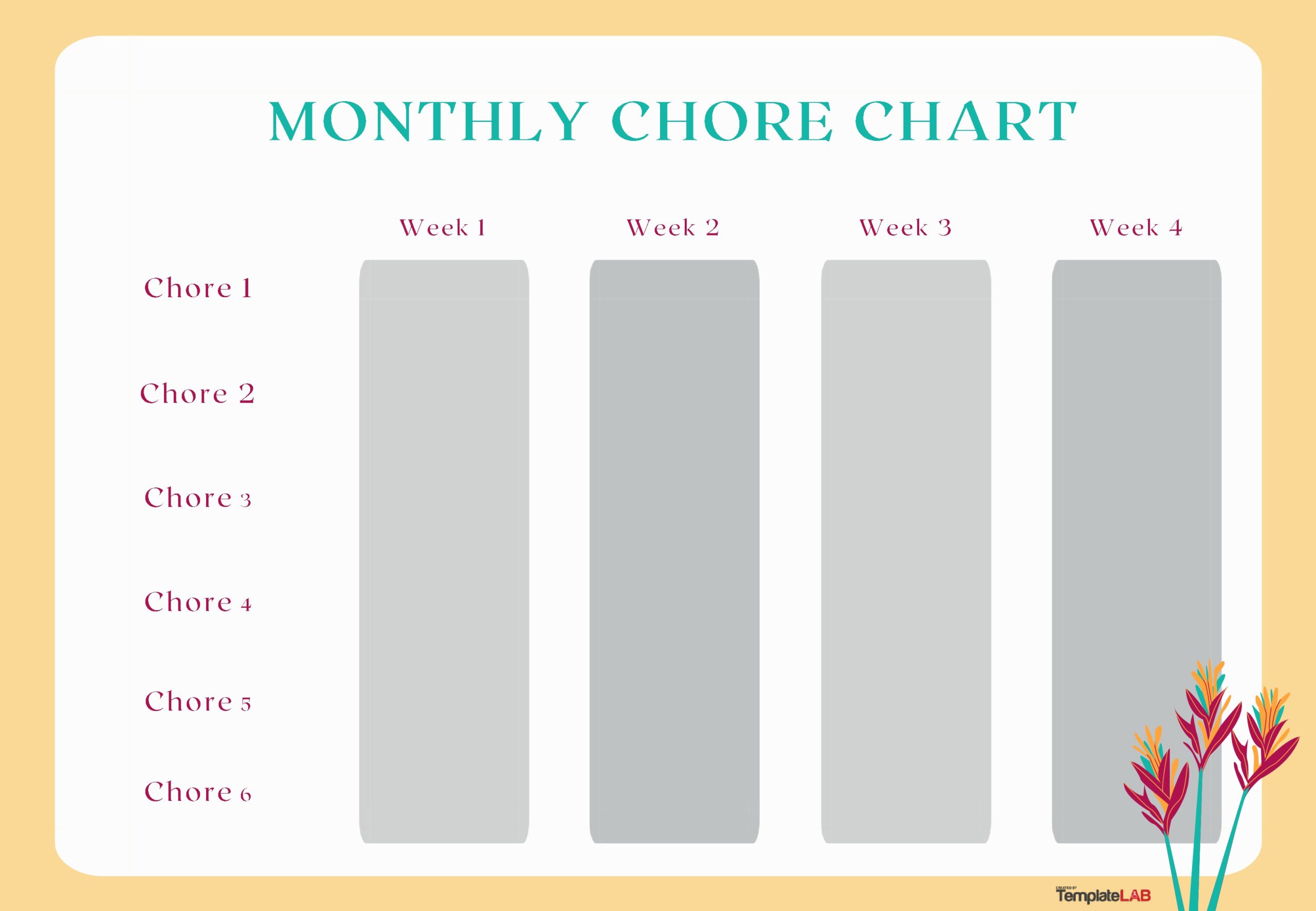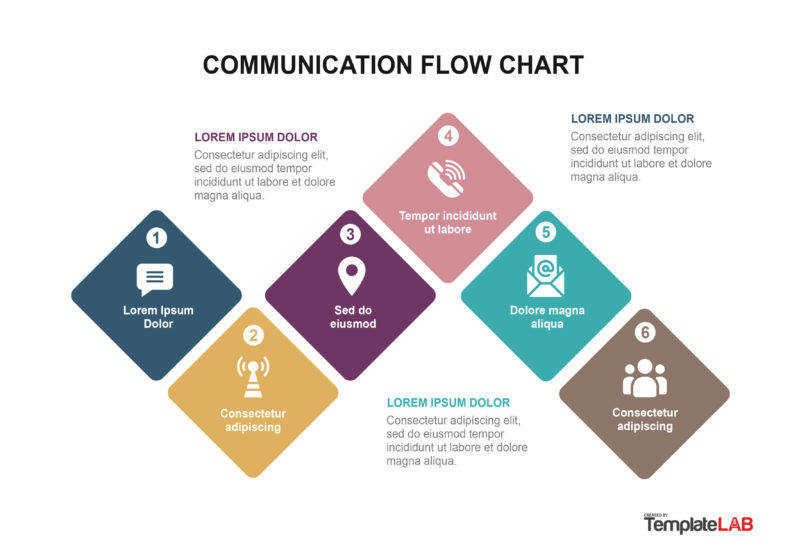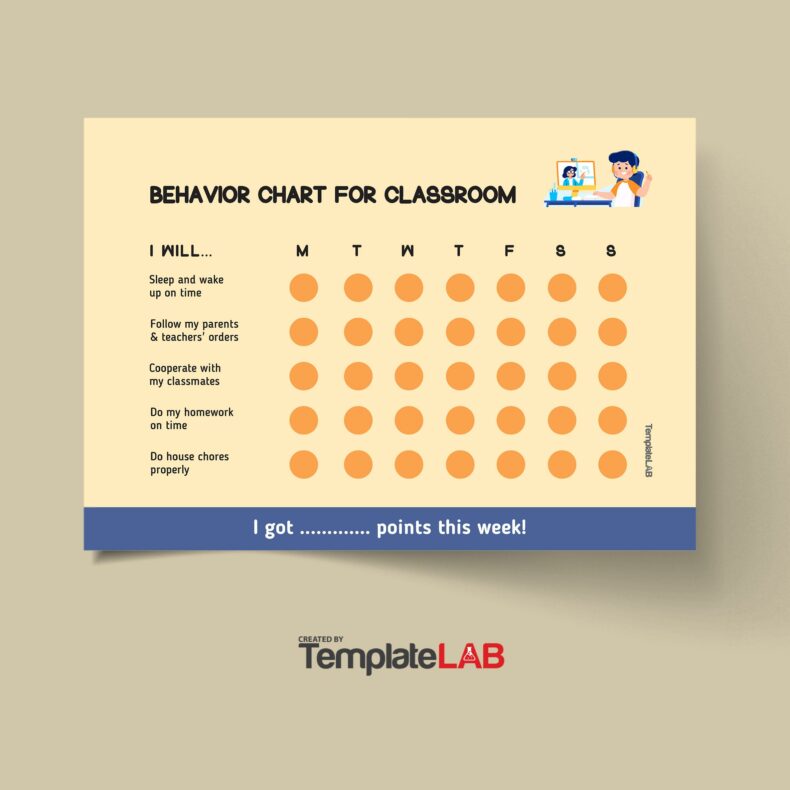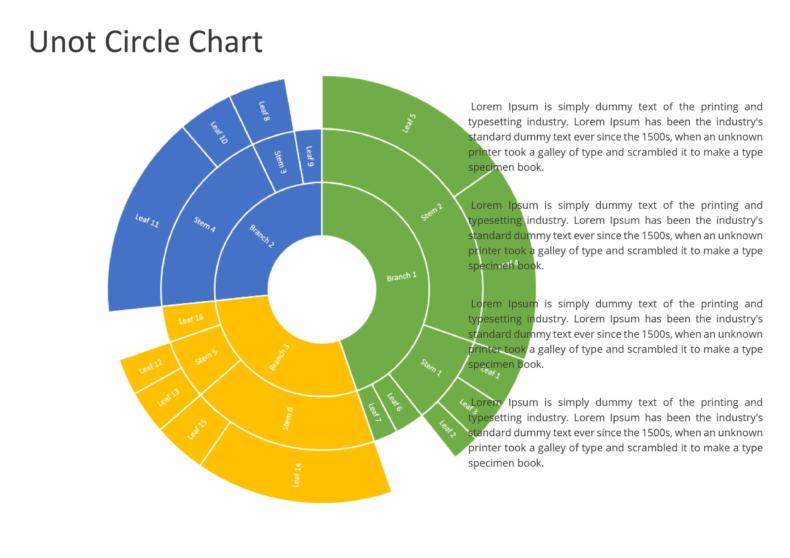If your children struggle to complete their chores, then using a chore chart is an excellent way to encourage them.
Chores teach kids a range of skills and give them a sense of responsibility. It is not always easy, however, to get kids to do their chores. They can make excuses or not feel motivated to complete them.
Table of Contents
By using a chore chart template, you can make doing chores fun for kids. Chore charts are a great way to remind kids to do their chores, but they also provide an incentive and make doing chores feel like a game.
You can browse our chore chart templates and download a free printable chore chart that works for you and your family.
Chore Chart Templates
How do I make my own chore chart?
Making a chore chart does not need to feel like a chore itself. A chore chart template will help you to stay organized when it comes to household tasks. Use this simple list to plan and design your chore chart.
You can download one of our chore chart templates to help you get started.
Decide which chores to include in the chore chart
All households are different, and everyone will prioritize different household chores. Kids should be completing age-appropriate chores, such as making their bed or folding the laundry, depending on their age.
To make doing chores more fun for kids, you could even have them decide which chores they want to do. This can make children feel more motivated, and it’s important that their voice feels heard too.
Include these columns in your chore chart
- Child’s name. You could even include a picture of your child completing the chore, or simply pictures of the chore itself, to decorate the chore chart and make it look more engaging.
- The household chore they must complete, along with specific instructions. Asking a child to ‘clean up’ is far too vague. Instruct them clearly, writing phrases such as ‘Put away your toys and put the clothes in the closet.’
- A deadline. Be sure to include when the chore should be completed. An important tip is to not give children too long to complete the chore, otherwise they can procrastinate or simply forget about it, making the chore chart meaningless.
- A completed column. When the chore is complete, you can simply tick this column in the chore chart. However, I think it is much more motivating and fun if you use stickers or stars as a way to reward children for completing the chore.
Should you reward kids for completing chores?
If possible, you could even give them a small gift if they complete a certain number of chores, or a really difficult chore, within a specific time frame.
Parenting experts and many parents believe that children should not be paid an allowance for their chores, as this method encourages a strong sense of discipline. An allowance can instead link the idea of completing chores with money and nothing else. However, chores should be about responsibility and learning.
Some might argue, however, that using money as a reward is an effective way to teach children about the value of money and the concept of work.
Whether you choose to reward children in this way is completely your choice.
Every family is different and this should be reflected in the chore chart. There is no correct way to design your chore system. As long as it is fun and engaging for children, then the chore chart is an excellent tool to use to help make chores seem less overwhelming.
Place the chore chart where everyone can see it
It is essential that all family members can see the chore chart regularly.
You could post chore charts on the fridge or on a wall in the dining room or living room for everyone to see. This ensures that children have seen the chore chart and know what is expected of them.
A printable chore chart template is a fantastic way to save time on making your own chore chart. You can customize and design the printable chore chart template to your liking.
Printable Chore Charts
How do you structure a chore chart?
Organize a suitable schedule
Chore charts work best when the chores are separated into categories: daily, weekly, and monthly chores. You can download a weekly chore chart template, or a monthly chore chart template, depending on your family and their schedule.
Some examples of daily chores could include:
- Making the bed
- Washing the dishes
- Putting clothes and toys away
Weekly chores:
- Vacuuming all the carpets
- Sweeping all the hard floors
- Dusting shelves and window sills
Monthly chores:
- Cleaning windows or large appliances
- Decluttering
- Helping to wash the car
You should decide which chores are most suitable for your child, depending on their age and capabilities. This will help you to designate chores appropriately, helping to keep the household running smoothly.
Create deadlines for each chore
Once you know who will complete which chore, it’s time to decide how long each chore should take. This is best as a specific set time, such as before dinner or before bedtime.
Setting deadlines can also help to inspire your child to complete the task, and makes completing chores more of a fun game.
Using a specific time frame is a great way to prepare children for later life, too. It helps to give them a sense of purpose when completing the chore, knowing that it will contribute to the functioning of the household. It also gets them used to sticking to deadlines and being punctual, which are great skills for any young person to develop.
Organize the chore chart according to rooms in the house
This is a helpful way to structure a chore chart.
For example, you can create a chore list for each room to build an effective chore chart system.
Bedroom:
- Make the bed
- Put clothes away
- Put toys away
Kitchen:
- Take out trash
- Wash the dishes
- Dry the dishes
Outside:
- Walk the dog
- Wash the car
- Mow the lawn
Delegate chores in order of preference
Maybe your kids hate vacuuming. Or maybe they loathe changing the bed sheets.
Assign these chores first.
This will make kids feel more accomplished and it will make the rest of the chores seem less daunting. It can provide a lot of motivation for children who really struggle to help around the house.
Chore Charts For Kids
What chores should kids be doing?
By assigning chores to your children, you will teach them a lot about discipline and responsibility.
Children will also learn about how the household functions and what is required of them to live comfortably at home. They will develop a strong work ethic and a good level of independence as a result of consistently carrying out household chores.
These are important skills for any young person to learn, and using a chore chart effectively will only help to develop these skills.
What chores are appropriate for young children?
When designing your chore chart, it is important to decide which chores are suitable for your family members.
The appropriateness of chores for kids depends on a variety of factors.
Age and physical ability tend to be the deciding characteristics when assigning chores.
Children will also learn by example, so it is important to always teach children how to complete chores properly.
I have proposed a list of suitable chores depending on age, but of course, every household is unique and not every chore will work for your child, or your family’s needs. Use these suggestions as a guide to help you design your chore chart.
Toddlers (Ages 2-3, with supervision):
- Put their toys back in the box
- Put dirty clothes in the hamper
- Wipe up messes and spills
Preschool (Ages 4-5):
- Make their bed
- Water plants and flowers
- Sort out food and water for the household pet
- Help to set the table
- Fold some laundry, such as matching socks together
Elementary school (Ages 6-9):
- Sweep the floor
- Clean their bedrooms
- Put away groceries
- Load and empty the dishwasher
- Vacuum
- Help to prepare dinner
- Fold and put away laundry
- Mop the floor
What chores are appropriate for older children?
As children grow older, they become more independent and capable of completing more difficult chores. Children at this stage should be more involved in the daily functioning of the household.
The chore chart should still be used consistently as children grow older, and older children can use it to hold themselves accountable for completing their chores.
The types of chores that older children can complete will also change. They should now be able to do many of their chores unsupervised or without parental guidance. Below are suggestions for the different types of chores older children can complete.
Middle school (Ages 10-13):
- Prepare basic meals
- Take the trash out
- Wash the dishes without help from parents
- Load the washer and dryer
High school (Ages 14+):
- Help with deep cleaning rooms in the house
- Mow the lawn
- Babysit younger siblings
- Walk pets
- Iron clothes
- Prepare meals when necessary
- Clean windows
- Help with simple repairs around the house
How to make kids do chores
- Consistency is key. Children really benefit from a daily routine and consistent structure, especially at an early age. By using the chore chart effectively while they’re young, children will become used to doing chores by the time they get older.
Also, if you don’t use the chore chart regularly, children can simply forget about chores or just hope that someone else will do them instead. - Demonstrate and assist. You can ease children into doing chores by guiding them through the process. The first few times they complete a new chore, be sure to assist them and show them how to do it properly. This helps to build their confidence. Then, as they become more comfortable, the chore will become easier and therefore the child is more likely to complete it.
- Perfect isn’t always the best. Children won’t always complete a chore perfectly, just like adults aren’t always perfect.
However, the fact that they’re trying and wanting to help is an excellent start. If you are too strict about perfection, children will likely give up on doing chores or even become overwhelmed by them. A gentle approach is best, especially for younger children who are still learning basic chores. - Don’t punish kids for missing deadlines. Using a chore chart helps to prevent the need for continual nagging. You don’t want to stop kids from wanting to help by constantly reminding them to do their chores.
Instead, give them an outcome that will motivate them.
I use this strategy a lot as a teacher of young learners, and it is an effective strategy for boosting children’s motivation. For example, if your child is refusing to wash the dishes, you can say “When you wash the dishes, then you can play video games.” - Show your gratitude. Helping around the house isn’t always easy, and you need to show appreciation for your child’s efforts.
Remember to praise your child during the chore, and always thank them for their help. This show of gratitude goes a long way in building up your child’s confidence, as it shows that you not only care for them, but you also trust them, too.
Rewarding kids with the chore chart is also a great way to show appreciation. Use one of our chore chart templates to help you design a reward system that works for you. This could be as simple as giving stickers or stars for completing tasks.
Why chore charts are a great idea
There are endless benefits to children doing their chores, and starting at a young age can help to set them up for life. It builds responsibility, a sense of achievement, confidence, and independence.
Using chore charts adds structure to your child’s routine, and helps to ensure that everything runs smoothly at home. Household chores can feel overwhelming, but with a chore chart, children will know exactly what is expected of them.
You can choose from our range of chore chart templates and download our free printable chore charts to use with your family.

